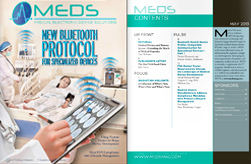| Drug Name: | Ambien |
| Tablet Package: | 10mg |
| Available Packages: | 30, 60, 90, 180 pills |
| Best Price: | 3.60 |
| Payment Method: | VISA, MASTERCARD |
| Shipment: | Express Delivery Service |
| PRESCRIPTION: | Not Required |
| Where To Buy Ambien? | VISIT PHARMACY |
Ambien and what you need to know about itAmbien is a non-benzodiazepine drug mostly prescribed for the treatment of insomnia. Read our article to learn how Ambien works, possible side effects, tips for safe treatment, and more.
Ambien: a brief patient’s guide
Ambien is a hypnotic which means it is a medication that helps people sleep. It is manufactured by an American pharmaceutical company Sanofi-Aventis. The active compound of Ambien is zolpidem tartrate—a non-benzodiazepine receptor modulator. Ambien is an original branded medication. This means that the active molecule was developed, tested, and registered by the manufacturing company. Branded medications are often more expensive because of the development costs. There are many available generics: they contain the same molecule but may be more affordable:
- Zolpimist (oral spray);
- Edluar;
- Stilnox;
- Intermezzo, etc.
Forms, strength, and availability
There are two forms of the drug: Ambien and Ambien CR, which stands for “controlled release”. CR forms of medications are formulated and produced to ensure their rational and controlled release in the body. Because they have the same main component, we will refer mostly to Ambien in our article. Ambien tablets have a 5 mg or 10 mg dose strength. Due to abuse potential, the drug belongs to Schedule IV substances. This means that Ambien is available only with a prescription issued by a licensed medical professional, and the said prescription may be refilled only up to 5 times in half a year.
How Ambien works
Zolpidem has an imidazopyridine structure and differs from benzodiazepines but shares certain pharmacological abilities with them. Similarly to BZs, zolpidem modulates the chloride channel of the GABA receptor, thus increasing the inhibitory effects of GABA that lead to sedation. The difference between benzodiazepines and zolpidem is that the latter is much more selective and preferentially works with a specific receptor (BZ1). This is why myorelaxant and anticonvulsant effects of zolpidem are much weaker than those of BZs.
Indications and use of Ambien
Ambien is FDA-approved for short-term treatment of insomnia. It helps patients to initiate sleep. Off-label (without specific FDA approval) use of Ambien is also possible: there are cases when patients with motor function disorders and consciousness disorders benefit from the use of Ambien.
Side effects
Serious
- Peak hypersensitivity and intolerance manifested by anaphylactic and anaphylactoid reactions;
- Abnormal thinking;
- Aggressiveness;
- Hallucinations;
- Sleep-driving;
- Other behavior changes.
It is noteworthy that withdrawal from long-term use of zolpidem and similar hypnotics shows more benefits for patients than non-withdrawing. Study participants who have stopped taking zolpidem had less stress, daytime fatigue, and sleep disturbances.
Common
- Headache;
- Muscle pain;
- Vision abnormalities;
- Drugged-feeling;
- Daytime drowsiness;
- Vertigo issues and falls;
- Dizziness;
- Nausea;
- Vomiting;
- Diarrhea.
Infrequient
When regarding side effects of medications, “infrequent” means that adverse reactions have an occurrence rate between 1 of 100 and 1 of 1000 patients.
- Increased sweating;
- Increased heart rate;
- Postural hypotension (drop in blood pressure when the patient changes their position from lying to sitting and from sitting to standing);
- Tiredness;
- Anxiety;
- Agitation;
- Thirst;
- Constipation;
- Respiratory infections;
- Eye pain and irritation.
We remind you that if you start taking Ambien and notice any negative changes in your health, you should notify your primary physician as soon as you can.
Warnings and precautions
Because the effect of Ambien on pregnant patients was never adequately studied, it is unclear whether the drug is safe for expecting mothers. It is known that if the person takes hypnotics and sedatives during pregnancy, their newborn can show withdrawal symptoms and neonatal flaccidity. Because Ambien crosses the placenta and exerts in the breast milk, its use is not desirable for those who are pregnant or nursing. If you have a known allergy to zolpidem and other components of Ambien, even inactive ones, you should not take it. Always tell your doctor about your negative experience with medications while discussing your therapy. If you are taking other medications, tell your doctor. There could be unwanted or dangerous interactions. Drinking alcohol during Ambien therapy is prohibited. The drug can affect motor function and alertness, induce drowsiness, and cause sleep-driving hazards. Therefore, driving and operating machinery while taking Ambien should be avoided.
How to take Ambien
The medication should be administered once a day when the patient is already in bed and ready to sleep. The standard initial dose is 10 mg. The doctor may adjust it depending on the patient’s needs and response to treatment. Food may affect the absorption of the drug. If Ambien is taken with a meal or right after it, the effect may take more time to develop.

